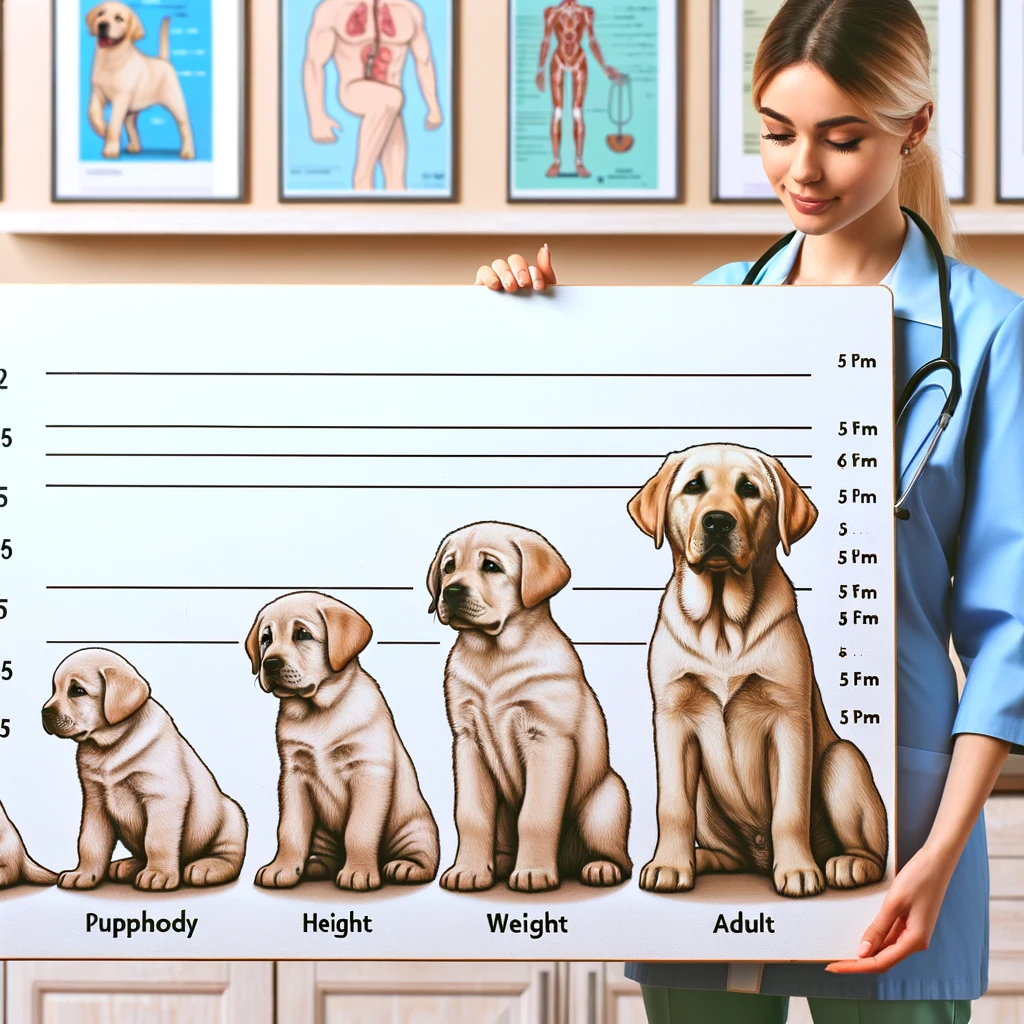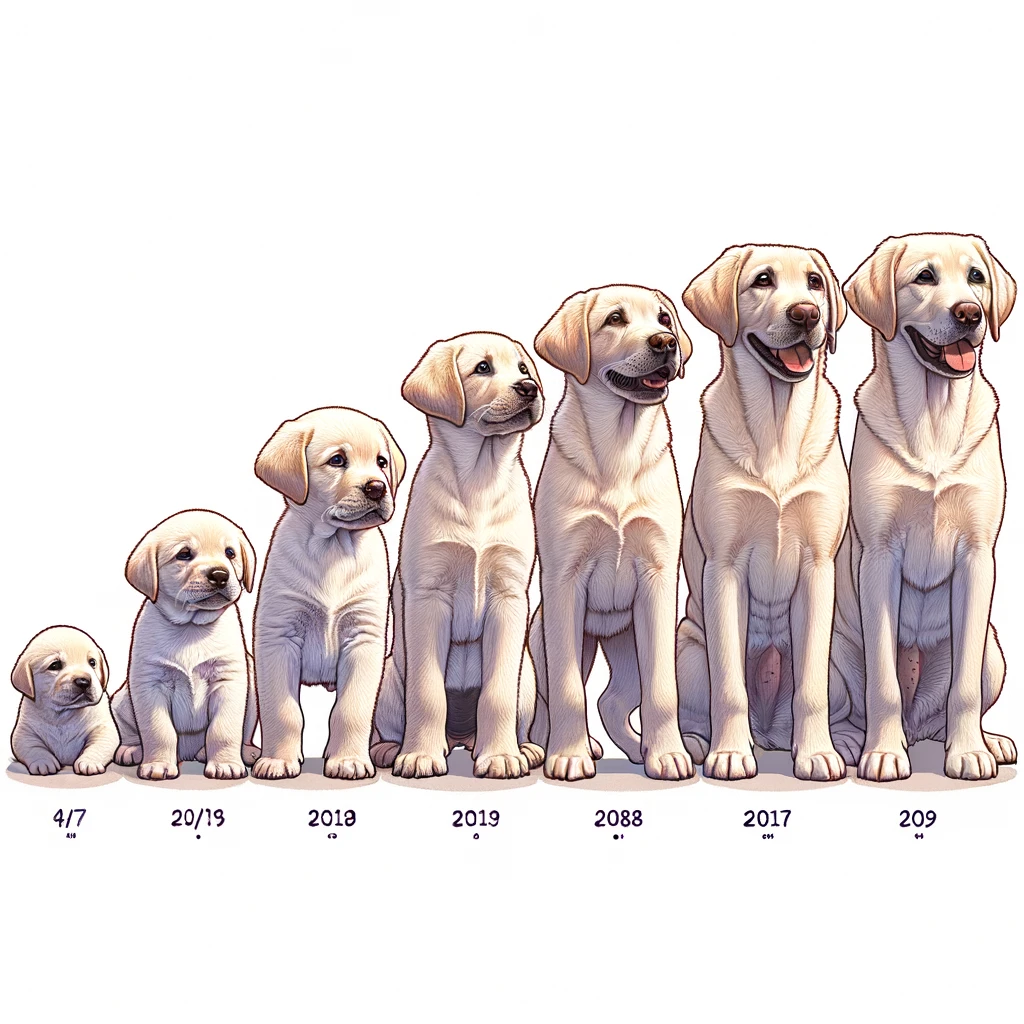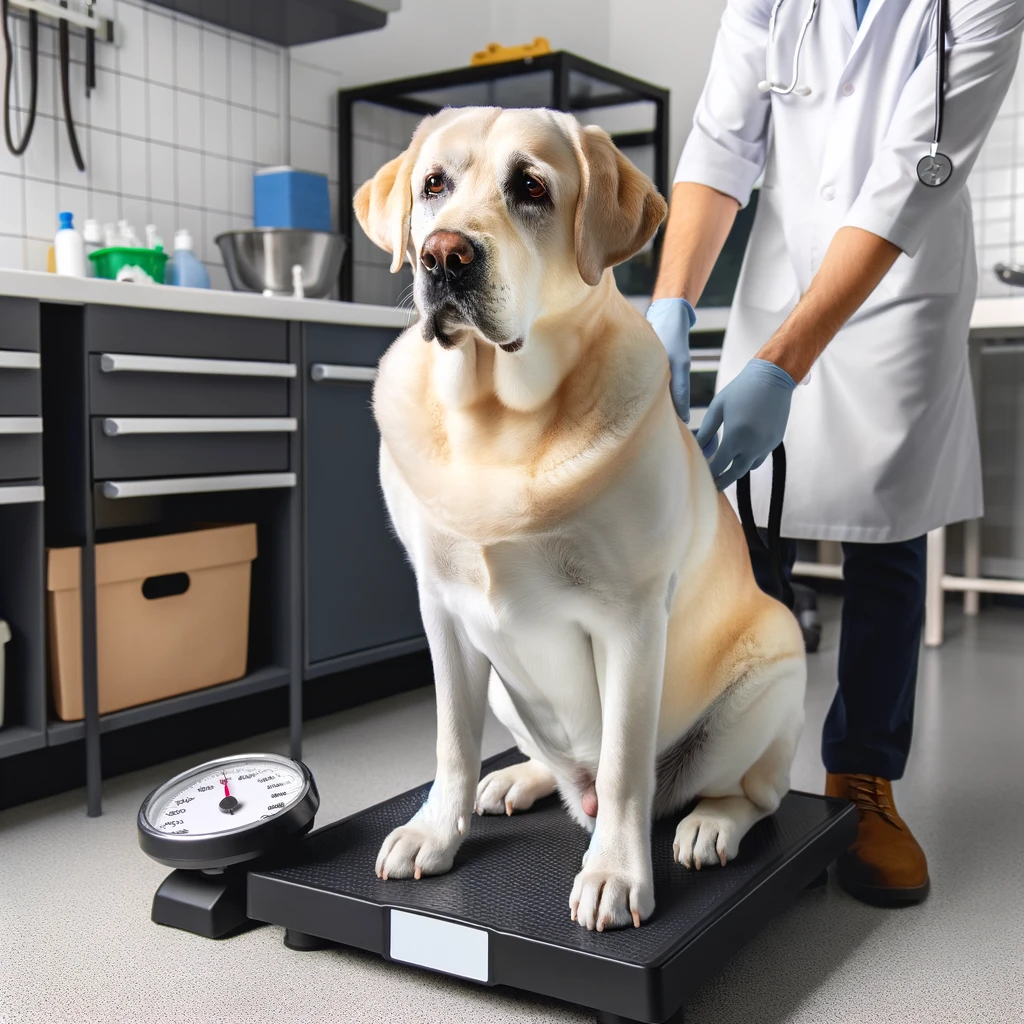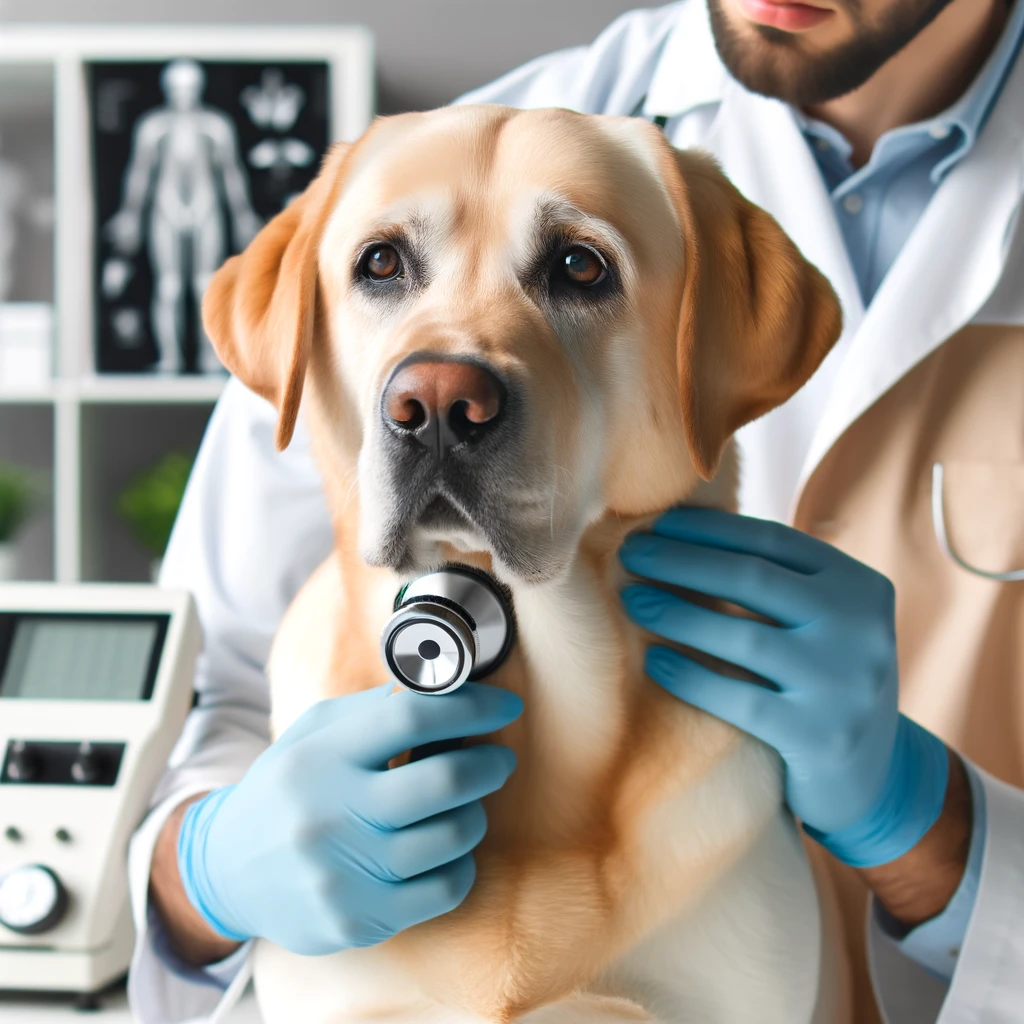As a devoted pet blogger and a lover of all things canine, I often receive questions about different breeds. One of the most common inquiries is about the size of Labrador Retrievers. How Big Do Labradors Get?
It’s an important question for prospective dog owners, as the size of a pet can significantly impact its fit within a family or living situation. So, let’s dive deep into the world of Labradors and discover just how big these beloved dogs can get. 🌟

📏 The Basics of Labrador Size
Labradors are known for being friendly, outgoing, and high-spirited companions that fit well in various family settings.
But when it comes to size, what can you expect?
Generally, a full-grown Labrador Retriever will stand about 21.5 to 24.5 inches tall at the shoulder.
Males are typically on the larger end of this scale, while females are often slightly smaller.
Weight is another factor where gender plays a role, with males weighing between 65 to 80 pounds and females usually tipping the scales at about 55 to 70 pounds.
These numbers are guidelines, but individual dogs can certainly vary.
Below is a growth chart table for Labrador Retrievers, which outlines the expected growth stages based on the information provided in the blog post. This chart serves as a guideline to help Labrador owners understand the typical growth pattern of their pets.
| Age | Height (Inches) | Weight (Males) | Weight (Females) | Growth Stage |
|---|---|---|---|---|
| Birth | N/A | 1-2 lbs | 1-2 lbs | Neonatal |
| 1 Month | 6-9 | 7-12 lbs | 5-10 lbs | Puppyhood |
| 3 Months | 9-12 | 23-30 lbs | 20-25 lbs | Rapid Growth |
| 6 Months | 16-17 | 40-55 lbs | 35-45 lbs | Slowing Growth |
| 9 Months | 18-19.5 | 55-65 lbs | 45-55 lbs | Adolescence |
| 12 Months | 21.5-24.5 | 65-80 lbs | 55-70 lbs | Approaching Adult Size |
| 24 Months | 21.5-24.5 | 65-80 lbs | 55-70 lbs | Full Size (Matured) |
Notes:
- Height: Measured at the shoulder.
- Weight: These are average weights. Individual dogs may vary due to genetics, diet, and overall health.
- Growth Stage: Describes the primary focus or characteristics of the Labrador’s development at that age.
🧬 Genetics and Labrador Size
The size of a Labrador can be influenced by its genetic background.
Labradors come from a lineage of sporting and hunting dogs, bred for physical performance and endurance.
This heritage plays a part in the breed’s size today.
Additionally, the size of a Labrador’s parents can give you a good indication of how big their offspring will grow.
Reputable breeders should be able to provide information on the size of a puppy’s parents and even grandparents.

🍲 Nutrition and Growth
Nutrition plays a crucial role in how big a Labrador will eventually get.
A balanced diet tailored to the growth needs of large breed puppies is essential for their development.
Overfeeding can lead to obesity and health issues, while underfeeding can hinder a puppy’s growth.
It’s important to follow a feeding guide and consult with a veterinarian to ensure your Labrador is on the right track.

🐕🦺 Exercise and Its Effects on Size
While exercise won’t necessarily make your Labrador bigger, it’s vital for muscle development and overall health.
Labradors are energetic and require regular exercise to maintain a healthy weight and muscle tone.
A well-exercised Labrador is less likely to become overweight, which can affect size perception and overall health.
🚼 Puppy Growth Stages
Labradors, like all dogs, go through various growth stages before reaching their full size.
The most significant growth occurs in the first six months, where puppies can gain weight rapidly.
After six months, the growth rate slows down, and Labradors usually reach their full height by their first birthday.
However, they may continue to fill out and gain muscle until they are about two years old.

⚖️ Managing Your Labrador’s Weight
Maintaining a healthy weight is essential for your Labrador’s overall size and health.
Obesity is a common problem in the breed and can lead to various health issues.
Regular check-ups with a veterinarian, a balanced diet, and plenty of exercises can help keep your Labrador in good shape.

🧪 Health Issues Affecting Size
Certain health issues can affect a Labrador’s size and growth.
Conditions like hypothyroidism can lead to weight gain, while other genetic disorders may impact overall size.
It’s important to be aware of these potential health problems and seek veterinary care if you notice any concerning symptoms.

🐾 Labrador Size Variations
While the AKC provides standards for Labrador size, there is variation within the breed.
Some Labradors may be larger or smaller than the breed standard, often due to genetics or other factors.
It’s important to remember that size doesn’t affect a Labrador’s ability to be a loving and loyal companion.
📊 Comparing Labradors to Other Breeds
When compared to other breeds, Labradors are considered a medium to large breed.
They are smaller than some of the giant breeds like the Great Dane but larger than small breeds like the Beagle.
Understanding where Labradors fall in the spectrum of dog sizes can help potential owners determine if they’re the right fit for their home.
🔍 Conclusion: How Big Do Labradors Get?
In the end, the size of your Labrador Retriever will depend on a combination of genetics, nutrition, and care.
What’s most important is providing love, proper care, and attention to ensure they grow into healthy and happy adult dogs.
Labradors are wonderful companions, regardless of their size, and they bring a lot of joy and love into our lives.
For more detailed information on Labrador Retriever care and size, check out reputable sources like the American Kennel Club (AKC) and The Labrador Site ([The Labrador Site]
Remember, while size is an important consideration, the unconditional love and companionship a Labrador offers are what truly make them a cherished part of the family. 🐕💖
